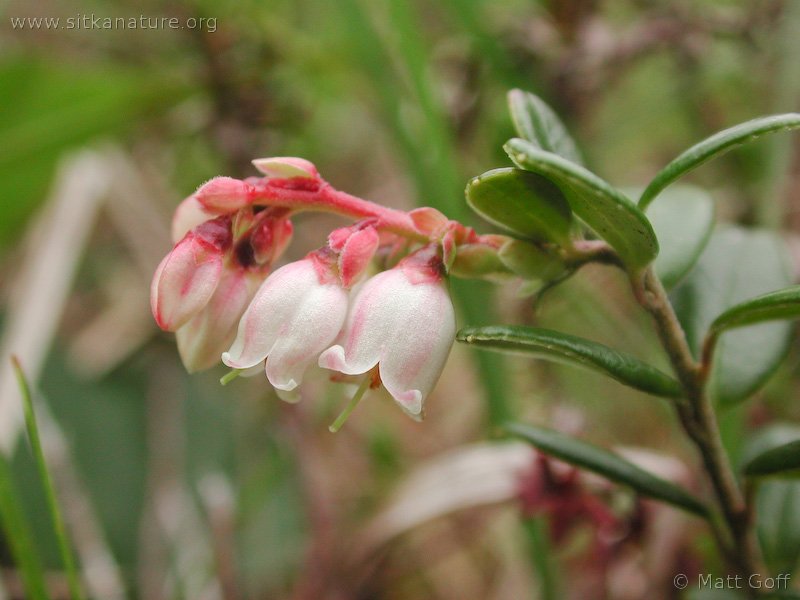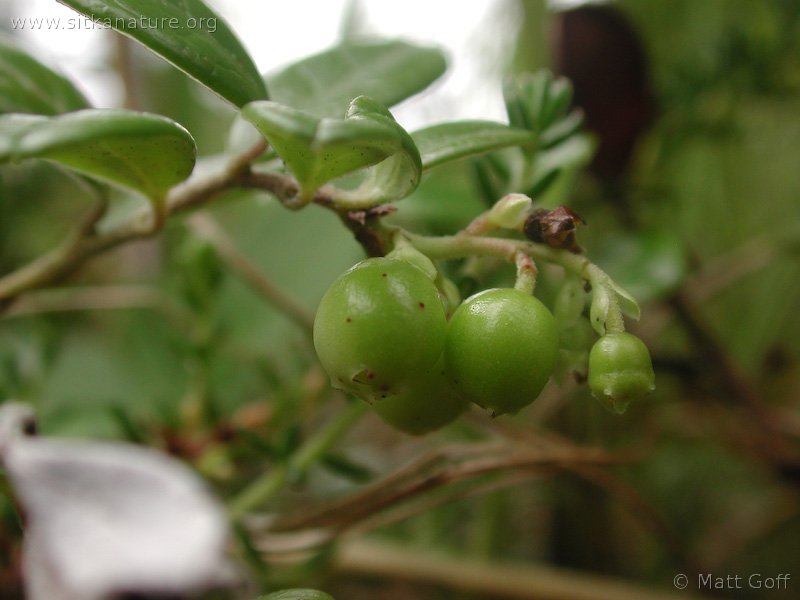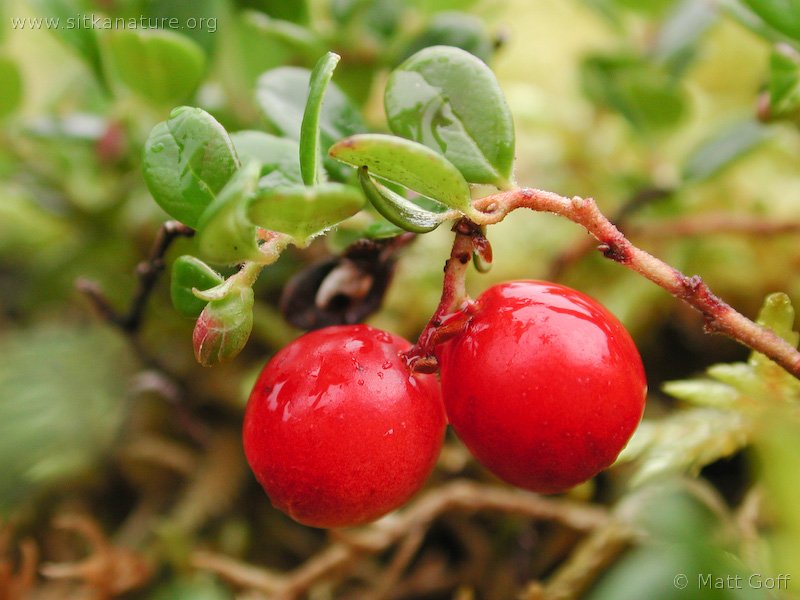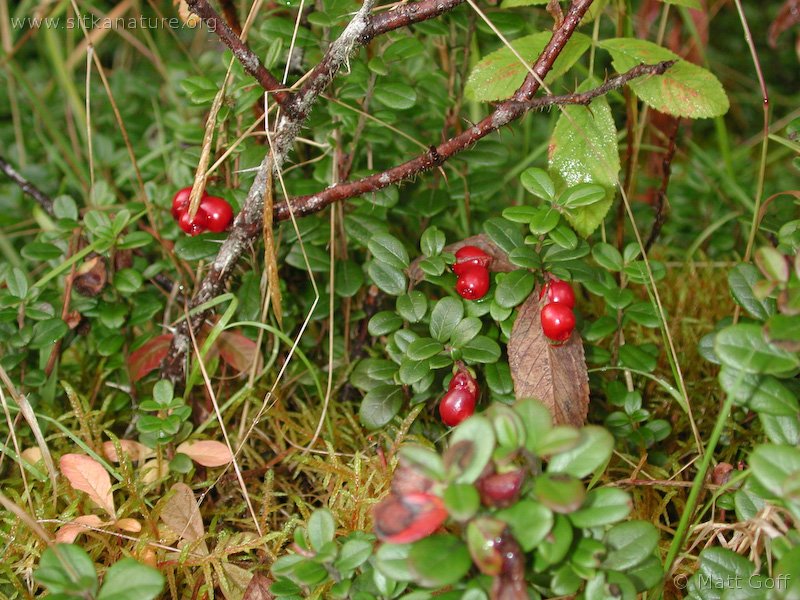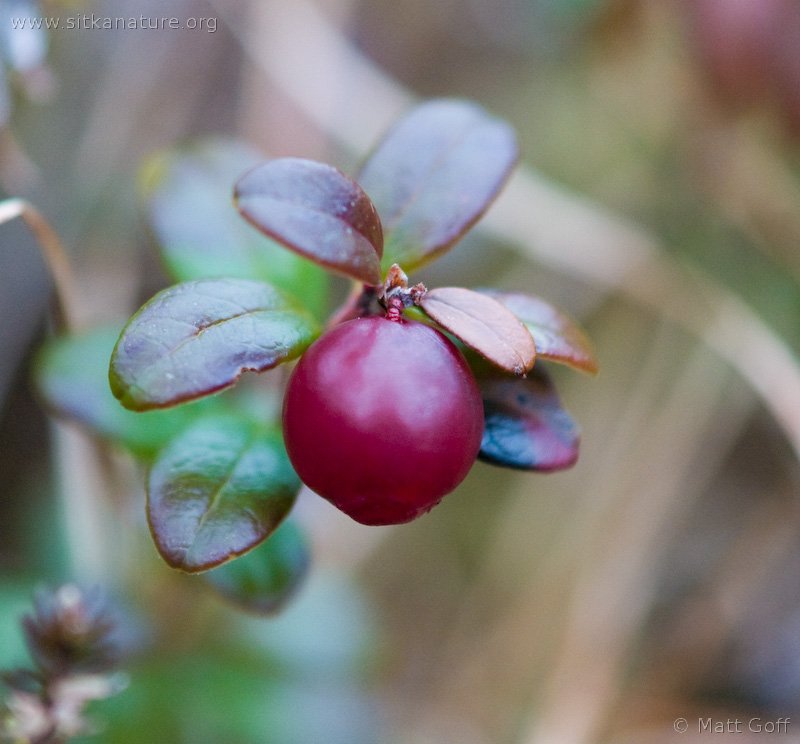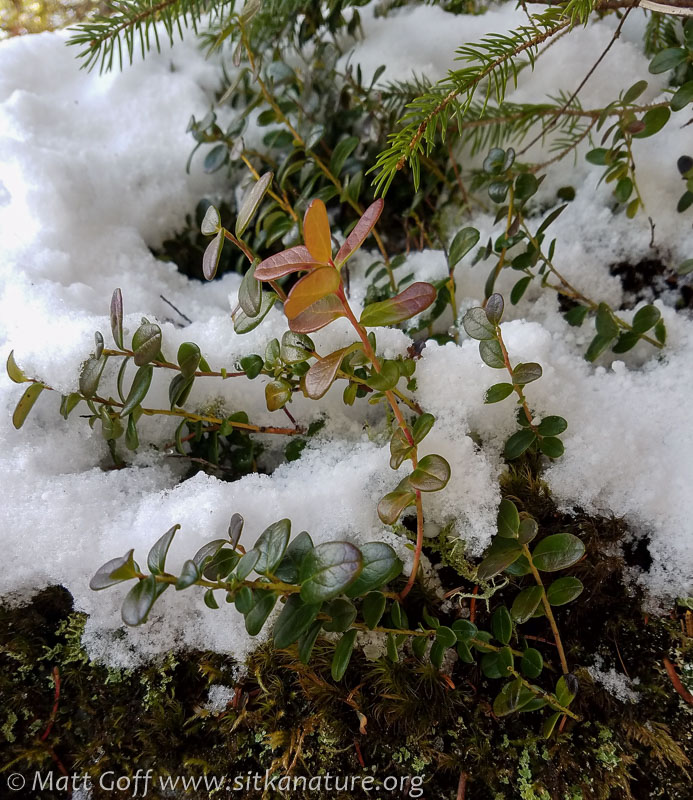Lowbush Cranberry (Lingonberry) – dáxw
Disclaimer: While I have a reasonably broad knowledge of the natural history of Southeast Alaska (especially birds and plants), I am only an intermediate Tlingit language learner. This page has been created as part of my learning process; I welcome comments and corrections, and in posting this publicly I hope that it can also be of some help to other learners. For additional resources, see tlingitlanguage.com
Dictionary of Tlingit: dáxw – lowbush cranberry, bog cranberry
Tlingit Noun Dictionary: dáxw – cranberry: low bush
Interior Tlingit Noun Dictionary: dáxw not included, but there is: itl’át (AT) – lowbush cranberry, see also k̲’eishkaháagu
R. Littlefield Document: – dáxw – cranberry, round, thicker stalk, lots of leaves
Lowbush Cranberry, also called Lingonberry, (Vaccinium vitis-idaea) is a plant that (around Sitka, at least) is most commonly found in muskegs (especially on moss covered stumps or around the edges), and occasionally in open areas along shorelines. Although the flavor of the berries (to my tongue) is similar to k̲’eishkaháagu (bog cranberries), the growth form is distinctly different. Lowbush cranberry grows on short (1 to 4 inches) upright stems with several oval-shaped leaves. The flowers are bell-shaped and in a good year, it is not unusual to see several berries per stem.
Additional photos of :


